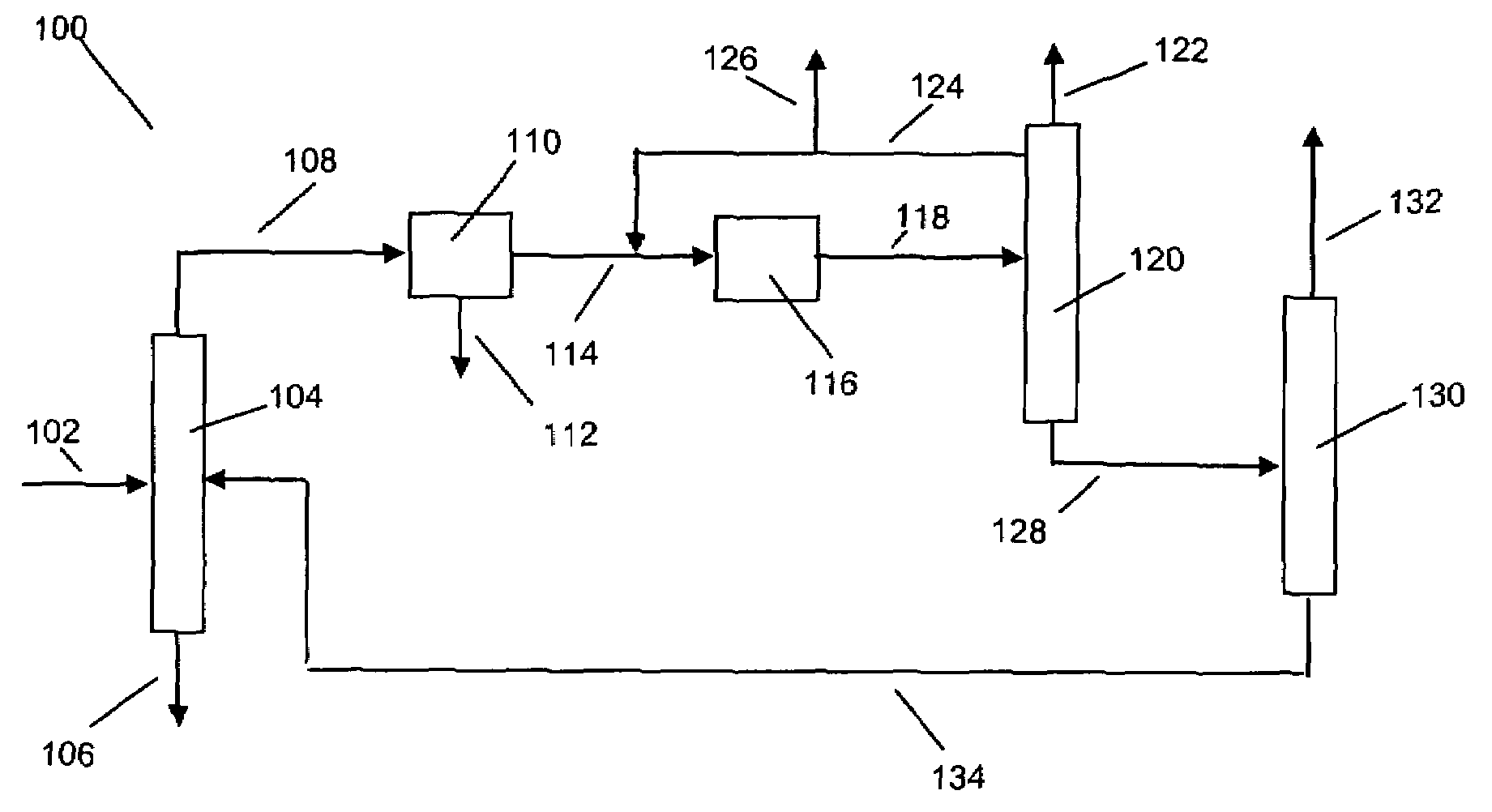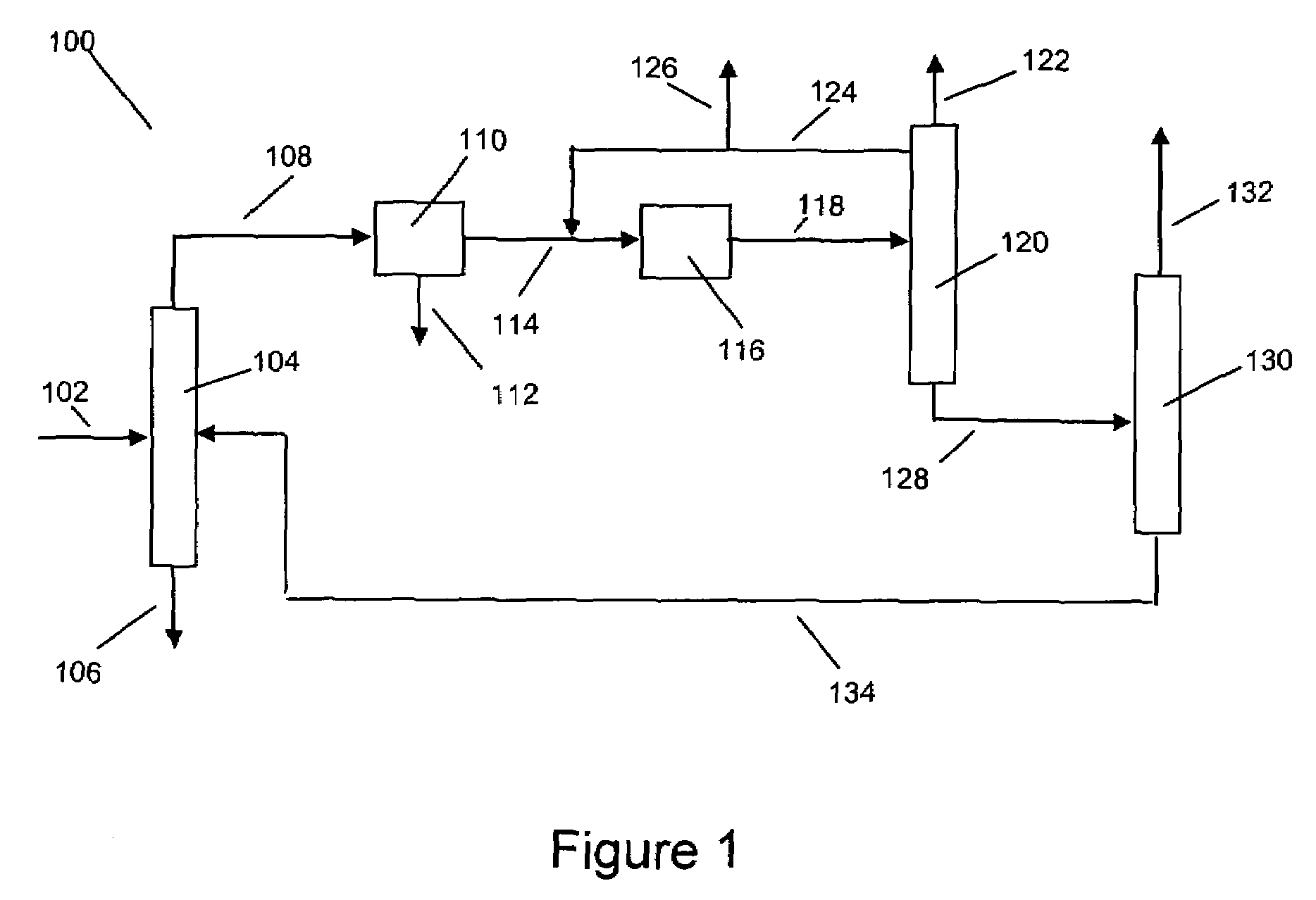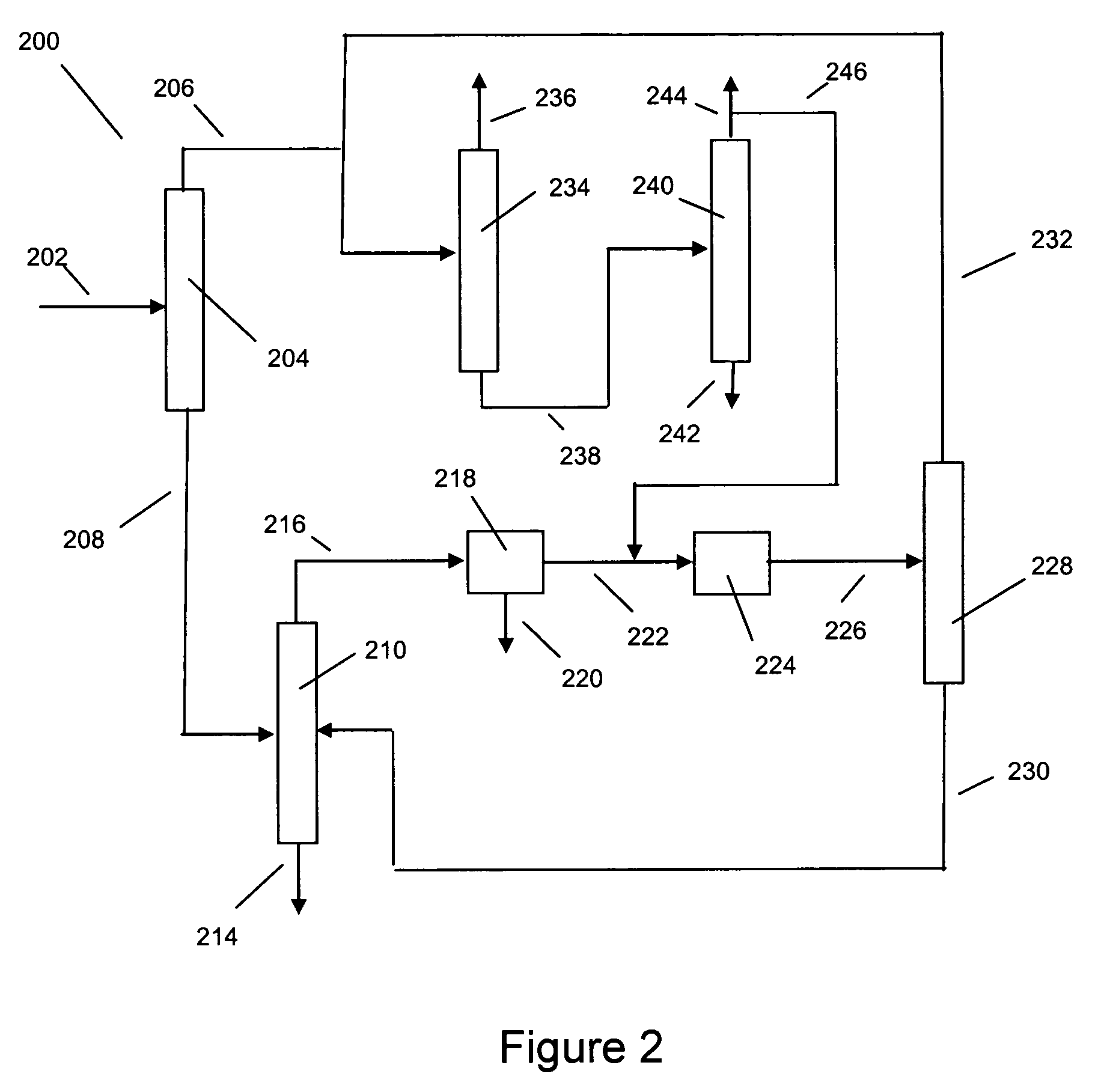Xylene isomerization with an added benzene
a technology of xylene and benzene, which is applied in the direction of organic chemistry, chemical apparatus and processes, hydrocarbon oil treatment products, etc., can solve the problems of difficult separation or conversion, high ethylbenzene, and high cost of separation from xylenes by superfractionation or adsorption, so as to improve the process of xylene isomerization, improve the effect of isomerization activity and closer to equilibrium
- Summary
- Abstract
- Description
- Claims
- Application Information
AI Technical Summary
Benefits of technology
Problems solved by technology
Method used
Image
Examples
examples
[0062]The following examples are presented only to illustrate certain specific embodiments of the invention, and should not be construed to limit the scope of the invention as set forth in the claims. There are many possible other variations, as those of ordinary skill in the art will recognize, which are within the spirit of the invention. All parts and percentages are by mass unless otherwise noted or clear from the context.
example i
[0063]In this example an isomerization catalyst comprising approximately 400 mass-ppm platinum and about 67 mass percent MFI-type molecular sieve. The catalyst is prepared as follows: Steamed and calcined aluminum-phosphate-bound MFI zeolite spheres are prepared using the method of Example I in U.S. Pat. No. 6,143,941. The pellets are impregnated with an aqueous solution of tetra-amine platinum chloride to give 0.037 mass-percent platinum after drying and calcination at 538° C. The calcined catalyst is reduced in hydrogen at 425° C.
[0064]The catalyst is used in a pilot plant processing non-equilibrium C8-aromatic feed having the following composition: C8 aromatic component of about 7.3 mass-percent ethylbenzene, 0.7 mass-percent para-xylene, 69.8 mass-percent meta-xylene and 22.1 mass-percent ortho-xylene; and benzene for some runs as shown in Table 1.
[0065]The reaction conditions in the pilot plant include a pressure of about 1200 kPa gauge, a hydrogen to hydrocarbon mole ratio of ...
example ii
[0068]In this example, a catalyst of the type described in Example I is used in a pilot plant. A feed of substantially the same C8 aromatic composition as in Example I is used for a number of runs with out added benzene or toluene and with additional benzene or toluene as set forth below in Table 2. The pilot plant is operated at a pressure of about 1200 kPa gauge, a hydrogen to hydrocarbon mole ratio of about 4:1, and a weight hourly space velocity of 10 hr−1.
[0069]A summary of the runs is provided in Table 2. A number of analyses are conducted at each temperature and composition over a several hour period after the pilot plant has arrived at steady state conditions for each temperature and additive level. The analyses reported below are means.
[0070]
TABLE 2XyleneAddedAddedNominalpX / X,Ethylbenzene,RingBenzene,TolueneWABT,Weight ratioConversion,Loss,TMB,RunMass-%Mass-%° C.(×100)Mass-%%Mass-%10037123.5643.61.930.4720038223.6954.62.120.5530039323.7365.52.440.6640040423.7675.72.870.8255...
PUM
| Property | Measurement | Unit |
|---|---|---|
| weight percent | aaaaa | aaaaa |
| weight percent | aaaaa | aaaaa |
| weight percent | aaaaa | aaaaa |
Abstract
Description
Claims
Application Information
 Login to View More
Login to View More - R&D
- Intellectual Property
- Life Sciences
- Materials
- Tech Scout
- Unparalleled Data Quality
- Higher Quality Content
- 60% Fewer Hallucinations
Browse by: Latest US Patents, China's latest patents, Technical Efficacy Thesaurus, Application Domain, Technology Topic, Popular Technical Reports.
© 2025 PatSnap. All rights reserved.Legal|Privacy policy|Modern Slavery Act Transparency Statement|Sitemap|About US| Contact US: help@patsnap.com



